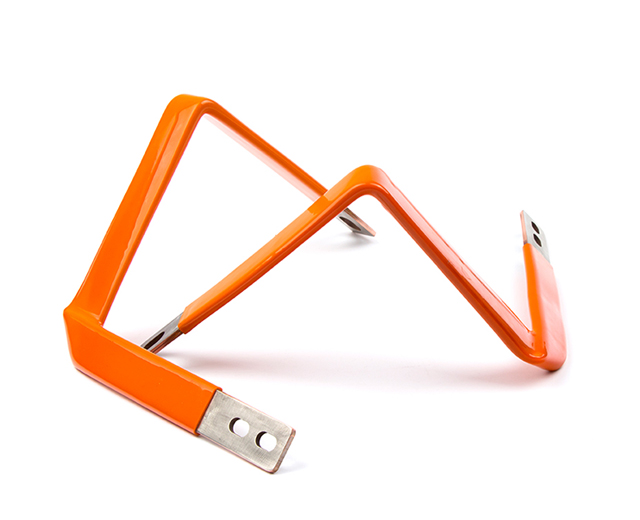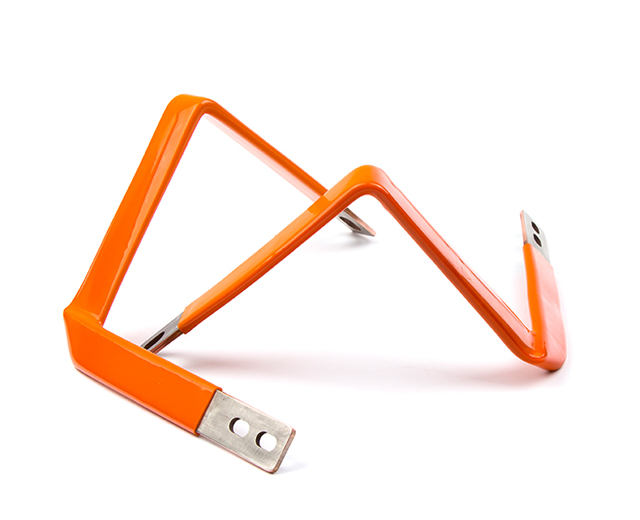

A battery pack busbar—also called battery busbar or EV battery busbar—is a crucial electrical component used to connect multiple cells or modules within a battery pack or battery bank. It ensures efficient current distribution while maintaining electrical safety and minimizing energy loss.
Unlike traditional copper Busbars, battery pack busbars are customized for high current, compact designs, and thermal management, making them essential in electric vehicles (EVs), Energy Storage Systems, and industrial battery banks.

The production of a battery pack busbar involves precise steps to achieve optimal conductivity, mechanical stability, and safety:
Material Selection
High-purity copper or copper alloys are chosen for superior conductivity and low resistance.
Cutting & Shaping
Copper sheets are cut and stamped or laser-cut to match the design of the battery pack.
Surface Treatment
Tin, nickel, or silver plating is applied to prevent oxidation, enhance solderability, and improve electrical contact.
Insulation & Coating (Optional)
For safety, busbars may be coated with heat-resistant insulation or epoxy resin, ensuring no short circuits within the battery pack.
Assembly & Quality Inspection
Busbars are connected to battery modules and tested for current carrying capacity, mechanical stability, and insulation performance.
This process ensures that each busbar in battery pack provides safe, reliable, and efficient electrical connections.
Compared with standard copper busbars, our battery pack busbars offer the following advantages:
| Feature | Description | Benefit |
|---|---|---|
| High Current Capacity | Copper busbar with low resistance | Efficient energy transmission, minimal voltage drop |
| Compact & Lightweight | Optimized thickness and width | Perfect for EV battery packs and modular battery banks |
| Thermal Management | Excellent heat dissipation | Prevents overheating and ensures battery safety |
| Corrosion Resistance | Tin, nickel, or silver plating | Long-lasting performance in harsh conditions |
| Customizable Designs | Multiple sizes, shapes, and mounting options | Fits any battery pack layout |
| Enhanced Safety | Optional insulation coating | Prevents short circuits and improves battery reliability |
| Material | Description | Application |
|---|---|---|
| Copper (C1100, C1020) | High conductivity, low resistance | Standard for EV and energy storage busbars |
| Plating | Tin, silver, nickel | Prevent oxidation and enhance electrical contact |
| Insulation Layer | Epoxy, PVC, PET | Electrical isolation for safety-critical applications |
| Parameter | Range / Option | Description |
|---|---|---|
| Thickness | 1 mm – 12 mm | Customizable per current rating |
| Width | 10 mm – 80 mm | Adapted to battery module layout |
| Current Capacity | 50 A – 3000 A | Dependent on copper cross-section |
| Voltage Rating | Up to 1500 V | Suitable for EVs and stationary battery banks |
| Surface Treatment | Tin, nickel, silver | Oxidation protection and reliable connection |
| Operating Temperature | –40°C ~ +125°C | Safe for automotive and industrial applications |
Battery pack busbars are widely used in:
Electric Vehicles (EVs) – Connecting battery cells and modules for traction power.
Energy Storage Systems – Modular battery bank connections for renewable energy applications.
UPS & Backup Power Systems – Safe and efficient current distribution in critical loads.
Industrial Battery Banks – Factory automation and high-current applications.
Busbar Battery Pack Systems – Optimized for compact design and high reliability.
Ensure proper torque for all busbar connections.
Avoid excessive bending; follow specified bend radius for copper busbar.
Keep surfaces clean from dust, oil, and debris.
Inspect periodically for corrosion, loose connections, or insulation damage.
Apply insulation sleeves or coatings when required for safety compliance.
Proper installation and regular inspection ensure safe operation and long service life.
As a leading bus bar manufacturer for battery packs, we stand out from competitors with:
Custom Solutions – Tailored designs for EV battery busbar, battery bank busbar, and modular battery packs.
Premium Materials – High-purity copper with advanced plating for low resistance and long service life.
Advanced Manufacturing – CNC stamping, laser cutting, and precise coating for reliable quality.
Global Standards Compliance – ISO9001, RoHS, UL, and automotive-grade certifications.
Technical Support & Fast Delivery – OEM/ODM capabilities with engineering support for complex battery pack designs.
We deliver battery pack busbars that ensure high performance, durability, and safety across automotive and energy storage applications.
Q1: What is a battery pack busbar?
A: A battery pack busbar is an electrical conductor connecting multiple battery cells or modules to ensure safe and efficient current flow.
Q2: What is the difference between a copper busbar and a battery busbar?
A: A battery busbar is customized for battery packs, with compact design, thermal management, and optional insulation, while standard copper busbars are rigid and used in general power distribution.
Q3: Can you customize the battery busbar?
A: Yes. We provide custom sizes, thicknesses, plating options, and insulation coatings to fit specific EV or battery bank layouts.
Q4: How much current can a battery pack busbar carry?
A: Depending on thickness, width, and design, our busbars handle 50A to 3000A, suitable for EVs and energy storage systems.
Q5: How should I maintain a battery pack busbar?
A: Regularly inspect connections, ensure proper torque, keep surfaces clean, and avoid bending beyond recommended radius.